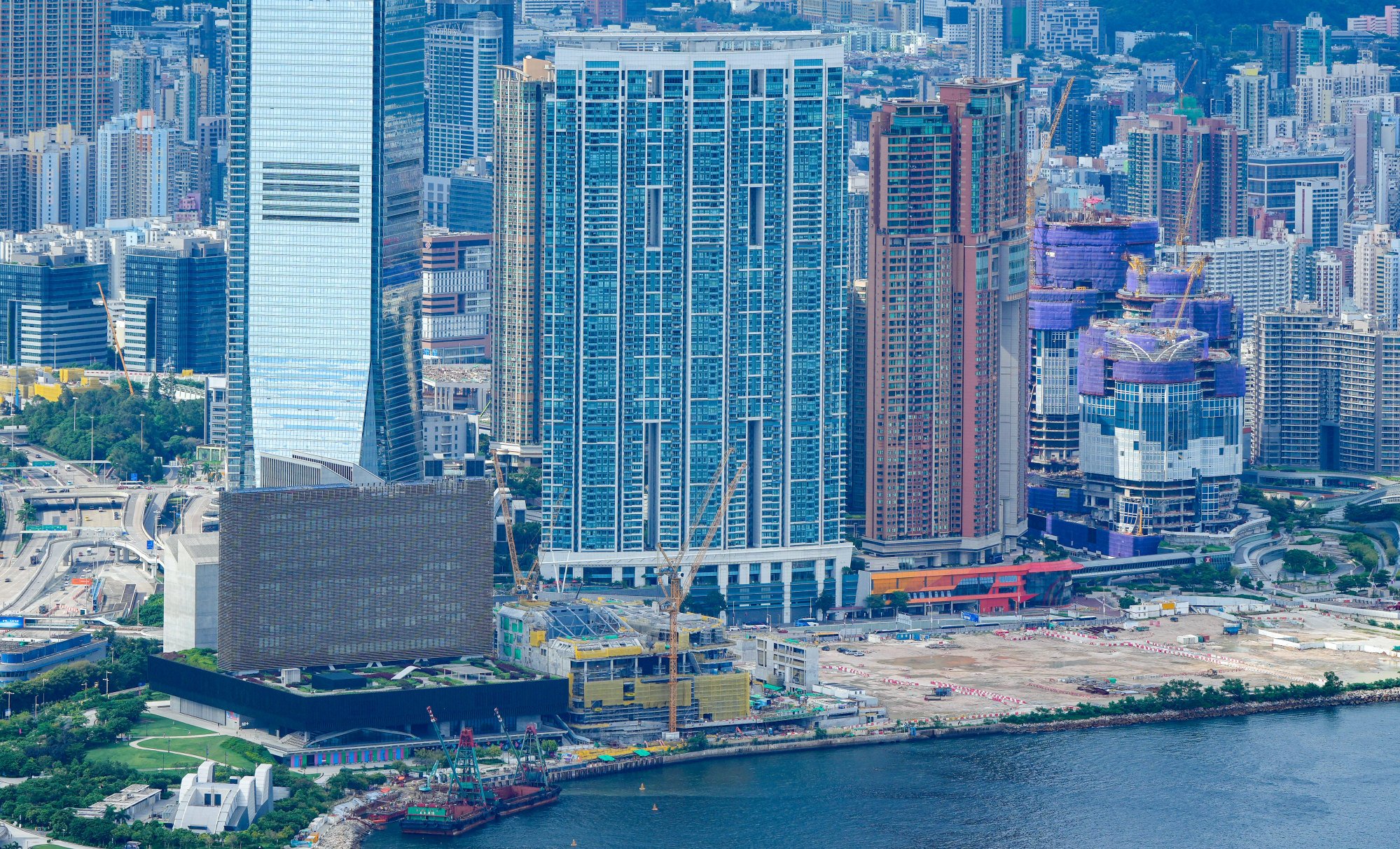Explainer | Can a new financing plan get Hong Kong’s cash-strapped West Kowloon arts hub back on track?
The authority behind Hong Kong’s premier arts hub has received approval to sell some of its land and topped up its bank facility to HK$5 billion (US$640 million) to avert a potential financial crisis.
The measures have given the cash-strapped West Kowloon Cultural District Authority (WCKDA) a much-needed lifeline, with its initial HK$21.6 billion endowment from the government previously expected to run out in June of next year.
The Post breaks down the new measures and their potential impact on the premier arts hub.
1. What are the new measures?
The Executive Council earlier this week approved changes to the authority’s financing model, allowing the sale of a residential development in the district’s second zone, with the area previously not up for sale.
The district has set aside 20 per cent of 851,400 square metres (9.2 million sq ft) of gross floor area in the arts hub for residential development, which can now be sold to help shore up the managing authority’s finances.
The authority said that the earliest time it could tender land under the new system would be in two years.
It also stopped short of saying how much money it expected to raise through residential land sales to cover its financial obligations over the next decade.
The Development Bureau will need to be consulted before tenders for the development can be made.
The authority is also required to adhere to several financial conditions under the new measures, including a triennial cap on operating deficits and a limit on the percentage of staff costs in the total annual operating expenditure.
The authority did not specify whether its residential land parcels will be put on the market in one go or divided up, as assessments covering town planning, environmental impacts and transport needed to be conducted.
Henry Tang Ying-yen, board chairman of the authority, said the model was similar to the one adopted by the MTR Corporation, which uses property development to fund its operations.
The “rail-plus-property” model had supported the company’s development over the past 45 years by ensuring “reasonable returns” for capital providers and funding its rail services, the transport provider said.
The authority is exempt from land premium payments to the government, but the latter reserved the right to impose the tax if it saw fit.
The arts hub has also topped up a bank facility from HK$4 billion to HK$5 billion in April with loans from 10 banks, due to mature in 2027.
The authority said that only HK$1 billion had been withdrawn so far.
2. What does this mean for visitors?
While Tang said there would be no changes to the operation of the district’s cultural facilities, the authority added that it was possible the price of tickets could increase.
The board chairman said in May that if the government opted not to back the authority’s submitted financing proposal, the arts hub could be forced to reduce the number of open days at its museums and Cantonese opera centre.
The authority said on Wednesday that while it would consider increasing ticket prices, it would strike a balance between attracting visitors and raising funds.
It stopped short of providing a timeline of any potential price rise.
3. How did the arts hub reach this point?
A gap between the arts hub’s income and expenditure is considered to be the root of its funding issues.
The authority initially sought to generate funds through the commercial development of spaces for retail, dining, entertainment, hotels, offices and residences.
But the Covid-19 pandemic and property market changes contributed to delays in the tendering of the sites.
Tang also previously attributed the district’s financial situation to the construction of the West Kowloon high-speed rail terminus, which had put a stop to all of the area’s revenue-generating developments for seven years.
Authority CEO Betty Fung Ching Suk-yee earlier said the HK$21.6 billion endowment from 2008 had also been drained by construction and operation costs, alongside a lack of substantial income.
The district has so far completed 45 per cent of its arts and cultural facilities, while some forms of its revenue-generating projects, such as hotel, office and residential facilities, are not in place.
Meanwhile, 3 per cent of other revenue-generating projects, such as retail, dining and entertainment facilities, have been built.

4. How does the arts hub compare with those overseas?
The Hong Kong Palace Museum achieved a high cost-recovery rate when compared with its top global counterparts for the 2023-24 financial year at 67 per cent, while the level for M+ stood at 42 per cent.
Both museums operate under a private-public partnership model, differing from some institutions such as the state-funded Louvre in Paris and the four privately funded Guggenheim museums.
The authority noted the cost-recovery rate for the Museum of Modern Art in New York stood at 55 per cent in 2022-23, while London’s Victoria and Albert Museum reached 33 per cent that year.


